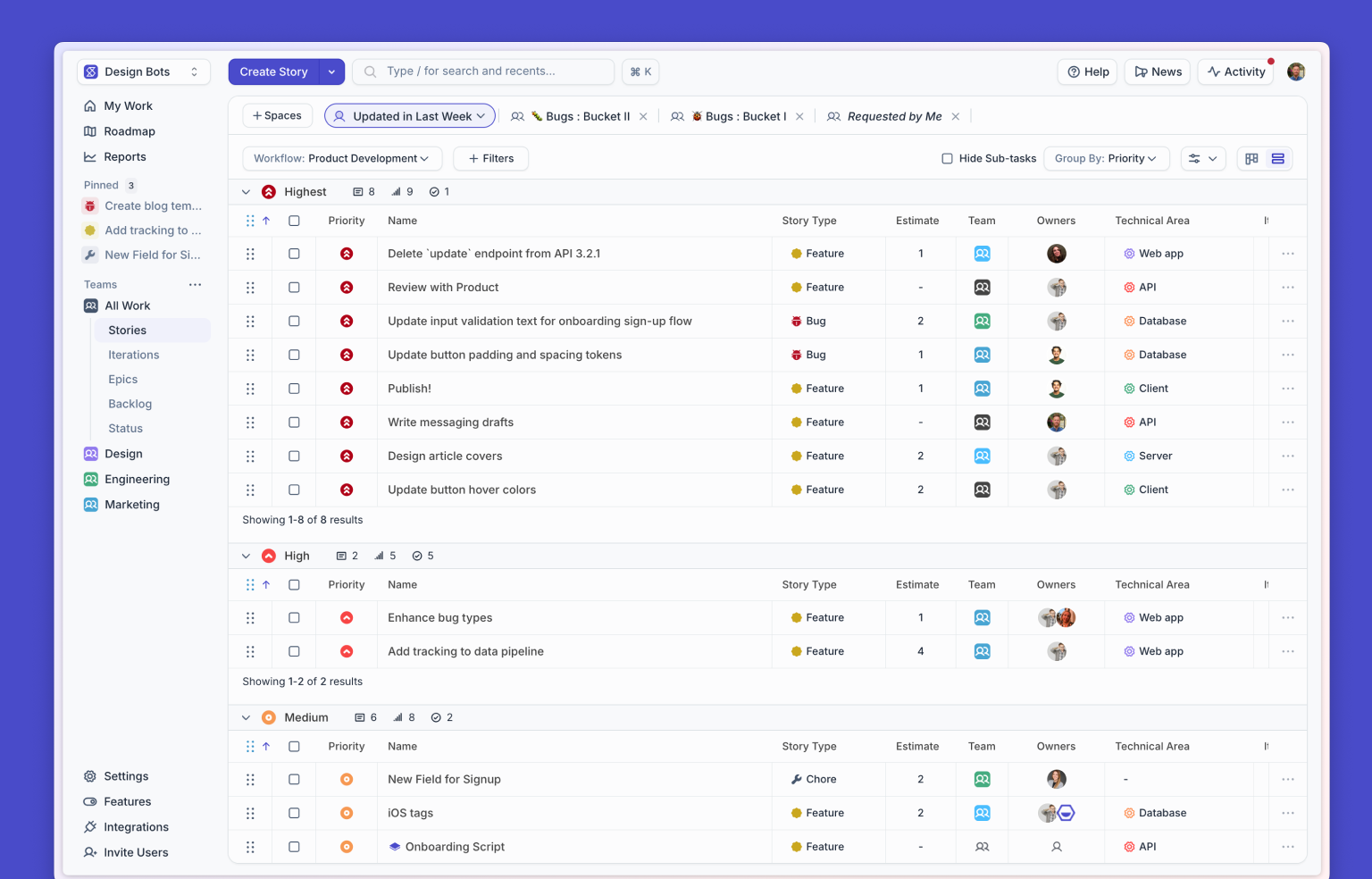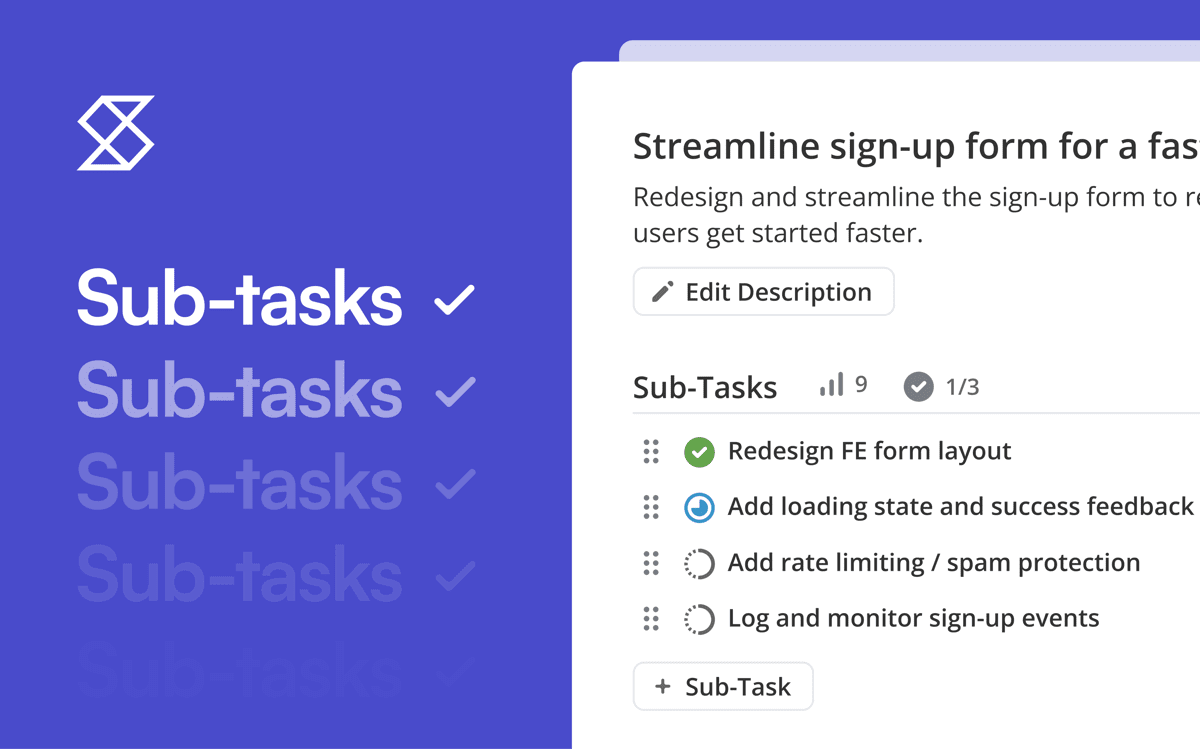A few developers working hard can get a lot done, but it takes a well-rounded team with different skills and roles to build and grow a successful software product and company.
But all too often, we find that our teams or team members are working in silos, not fully understanding what others are doing (or why).
With this series, we’ll be digging into the various members of your team to help you understand and work better with them all.
This week we’re covering product managers. To get a feel for what the product manager does, you can think of them as the CEO of the product. It’s their job to answer the major questions about the product, like what your major differentiators are or why people will buy it, and they own the strategy, ideation, and features for the product.
Product management shouldn’t be confused with project management, although the two can overlap (and depending on the size of the team, one person might be filling both roles). The roles of project manager and product manager differ in a few ways:
- The product manager is focused on product goals and is responsible for creating the product strategy (including things like considering what problems the product solves and the features and benefits of the product)
- The project manager is typically less concerned with product goals and more concerned with project goals (like which team member is doing what, how the resources of the project are being managed, and whether deadlines are being met)
Now that we’ve got all that cleared up, what does matter most to product managers? Let’s find out…
Product managers want answers
Catherine Shyu, product manager at FullContact, says she wants people to understand she’s asking questions for a reason. Sometimes, team members get annoyed with seemingly-endless questions, but it’s her job to get enough information to make informed decisions about the product and the direction it should take.
When product managers are investigating options for a product or a planned feature, hearing “that’ll take a long time” is not enough. They have to follow up with enough questions to be able to do all of the following:
- unpack what aspects will be difficult and why
- understand whether there is any way to shorten the projected timeline or exclude the “hairier” elements
- be available to problem-solve and make quick calls if/when development gets stuck
Good product management involves a lot of exploration to figure out what to do next and how to tackle problems if/when the team gets stuck.
Product managers want you to read the specs
Another large part of a product manager’s job is writing Product Requirement Documents (known as PRDs or “specs”). These documents detail who a feature or product is for and how it should work. Depending on the product, spec docs can grow so long that they seem like too much for the average engineer to read and act upon. When the engineer doesn’t read the spec, they can end up slowing down the project, either by asking a lot of questions that hold up the workflow or by building something in a way that veers from the goals of the project.
If you don’t have the time to read a spec, don’t just skip it! Tell your PM that you’re having a hard time getting through the spec doc, and they can work to get you up to speed. In Catherine’s case, she’ll often put the information in a PowerPoint or a flowchart.
(If you want to learn more about PRDs and how important they are, including a case study on Product Hunt’s PRD, check out this post.)
Product managers want their teams to understand what problem they’re solving and what they’re trying to build, so they’ll do what it takes to make that easier for everyone.
Product managers want the feedback
Doug Wilson, VP of Product at Lessonly, says that one of the most important aspects of his job is regularly seeing feedback from customers, whether that feedback comes from customer interviews, user surveys, or seeing the feedback sent in through support channels. It’s crucial for product managers to have access to direct feedback and be able to read or hear in the customer’s words what they like about the product and where they’re running into problems.
Sometimes, in the interest of saving time, you might summarize feedback before giving it to a product manager. However, that quick summary often comes at the cost of losing the context of the feedback. In Doug’s words: “Summarizing feedback can help save time initially. But we still need a way to go back and see or talk through specifics with the customer, so that we can understand the impact for them and think about the right solution.”
Product managers want data
Another part of product management that can be easily overlooked is the value of product usage data. Product managers don’t only want to see how many customers are using the product — they also want to see what features are being used the most/least. They especially appreciate having those metrics at their fingertips as soon as possible when rolling out new features.
It’s also important for PMs to have customer profiles to go with this data. They need to be able to assign these usage statistics to specific users or types of users, instead of just having aggregate data. Knowing who is or isn’t using a particular product/feature makes it easier to reach out for (and get) the feedback they need to guide the product. Having intimate knowledge of these usage statistics can help a product manager guide the product in the right direction.
Taylor Hollenbeck, VP of Product at Index, notes that when he got into product management, he thought the product would be largely a reflection of his idea. Over time, though, he’s learned the lesson that his opinion means “almost nothing,” noting that his job is to “analyze market data, chat with customers to understand their pain points, analyze usage data, and then advocate for the adoption of what I’m seeing/hearing from our customers to the rest of our team.” He adds that he often works not to share his ideas so he doesn’t bias what he’s seeing or hearing from customers when sharing their feedback with the rest of the team.
Michael Moore, senior product manager at Intuit, adds that acting on the data and feedback gathered throughout this process is sometimes viewed unfavorably by other members on the team, but it shouldn’t be. “Iteration isn’t the mark of poor planning or lack of foresight. It’s a necessity, spurred by changing technology, customer evolution, and/or business requirements.”
More than anything, product managers want insights — as detailed as possible. The more they know, the easier it is for them to envision and deliver a product that keeps customers happy and business humming.
If you’re a product manager, we’d love to hear more about what makes you tick - let us know on Twitter!










.png)






%20(788%20x%20492%20px)%20(1).png)
.png)

